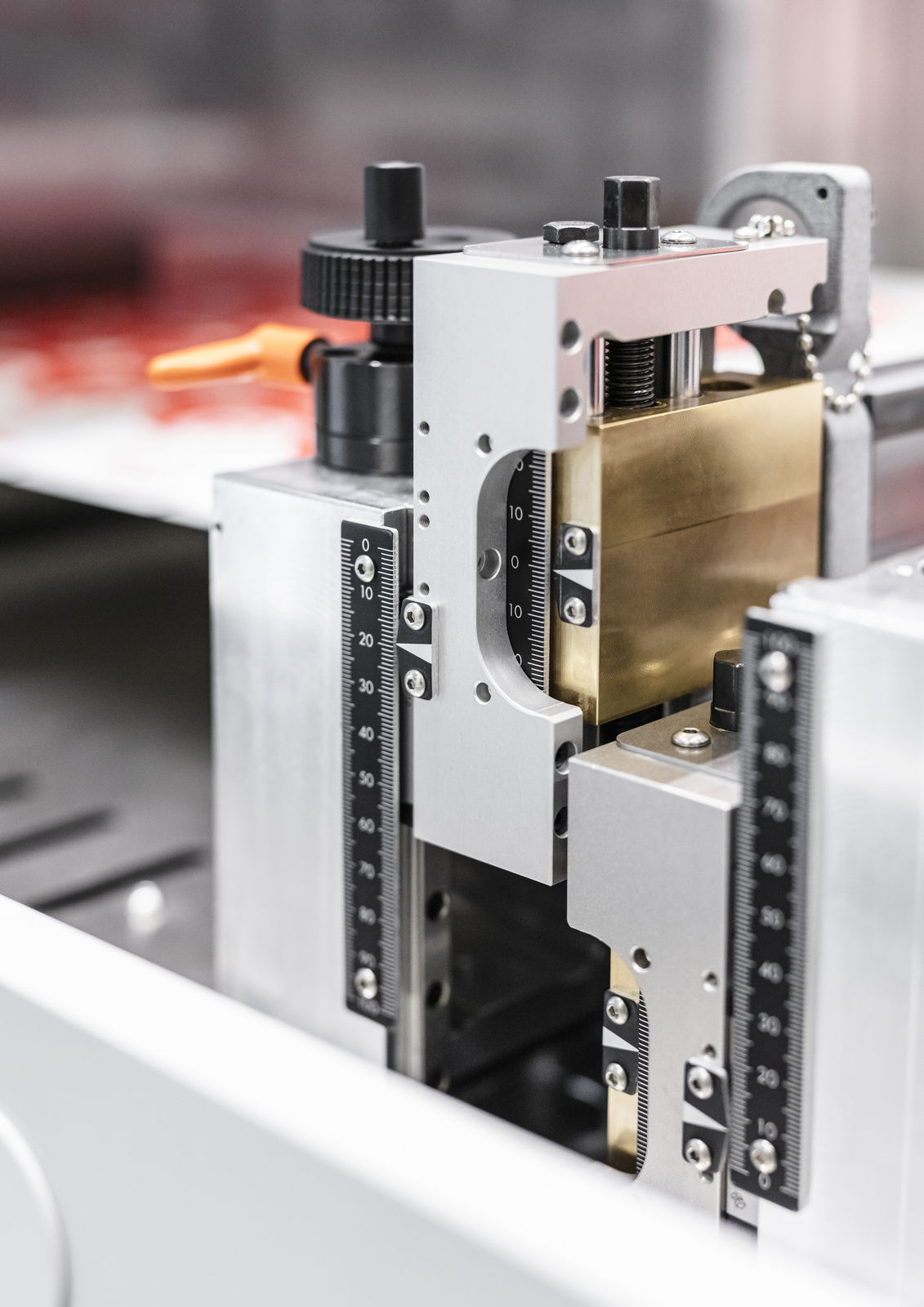If you want to stay at the forefront of technology, you have to be prepared to try something completely new. This was also the case at Berhalter Swiss Die-Cutting in Widnau, Switzerland: “We had been continually developing our machines and eventually reached a plateau,” says Dalibor Schuman, Managing Director and member of the board of directors. Rising costs could no longer be compensated by optimizations in design, processes or materials. This marked the start of development for the Swiss Die-Cutter B6.
Among the questions addressed by the project: does today’s technology make it possible to build a machine with 20 to 25% higher output while simultaneously lowering manufacturing costs. Preliminary analyses were sobering. “It became apparent that we needed technologies that the market wasn’t yet offering,” Schuman recalls.
So, what do you do when you need something that doesn’t exist? The answer is clear, namely to look for a partner that offers the right portfolio and know-how to develop such technology. “For us, it became clear that B&R would be the ideal partner,” sums up Schuman, explaining why: “Not only do they offer everything from drives to HMI, they are also one of the few manufacturers able to achieve the cycle times we needed.”
To see why cycle times are so important for increasing the productivity of the B6, all it takes is a bit of math. To deliver 25% higher output its predecessors, the die-cutter would have to achieve 500 strokes per minute instead of the previous 400. That means each stroke must be completed not in 150 but 120 milliseconds.
Now, 30 milliseconds may not seem to be much of a game changer. At least, not until you consider that Berhalter also intended to integrate real-time stroke correction as an additional innovation. Earlier Berhalter machines performed stroke correction using tendency control – making adjustments based on measurements performed over many strokes. The Swiss Die-Cutter B6, on the other hand, reads the stroke rate in real time and corrects it during the die-cutting process. The key to this impressive technological leap are the intelligent servo axes.
But what is it that makes a servo axis intelligent? In the case of the B6, the secret is B&R’s reACTION Technology. Using FPGAs (Field Programmable Gate Arrays), intelligence is outsourced from the control cabinet directly into the field, opening up enormous flexibility for the user. “reACTION Technology can be installed anywhere on a machine and allows response times of less than one microsecond without any load on the PLC,” explains Paolo Salvagno, Managing Director of B&R Switzerland.

The Swiss Die-Cutter B6 from Berhalter achieves 500 strokes per minute. It’s made possible by intelligent servo control.
Data processing directly in the actuators is just one of many innovations in the new system developed by the Swiss machine builder. The machine has even more technical refinements that reduce costs. The B6 maps movements digitally instead of mechanically, for example, which optimizes manufacturing. Says Schuman: “The main drive on our existing machines is based on a mechanical lever system. In the B6, we replaced this with a digital system.”
Since nothing like it was available on the market at the time, Berhalter developed this innovative system in-house using B&R’s mapp Technology. “Whenever we reached our limits in terms of development, we could always turn to B&R,” praises Schuman. What made the collaboration particularly fast and successful from his point of view was access to a dedicated engineering contact throughout development. That allowed Berhalter engineers to focus on their own expertise – it took them less than two years to bring the original idea for real-time stroke correction and the digital drive axes to market readiness.




